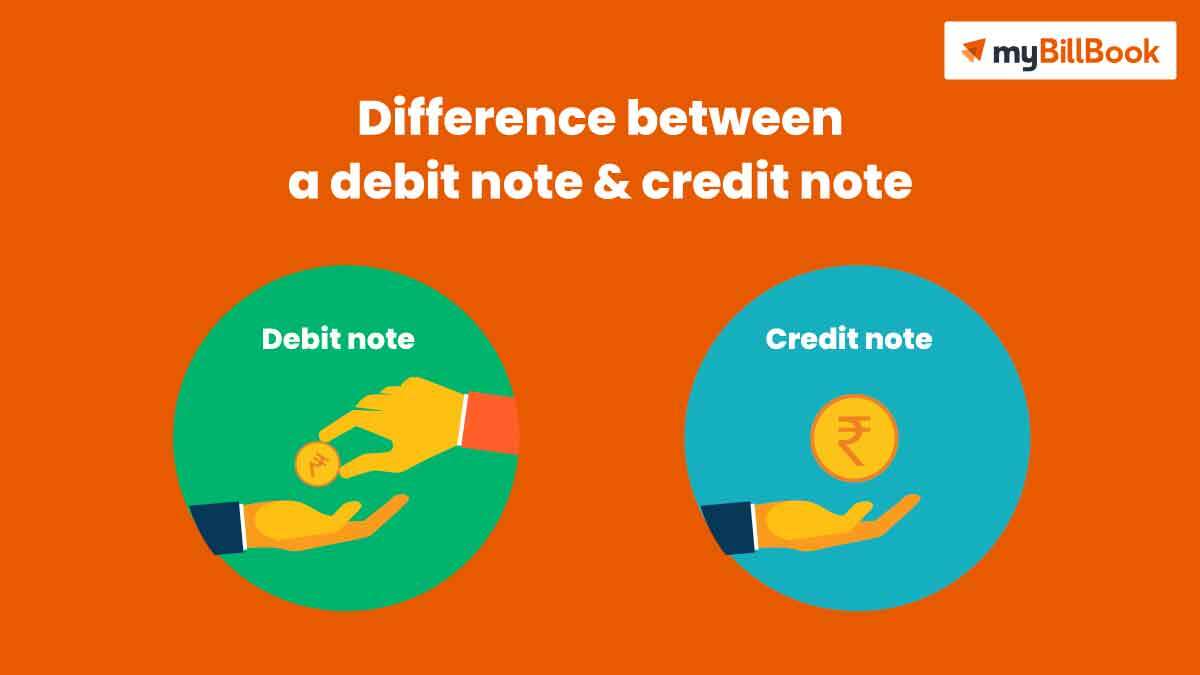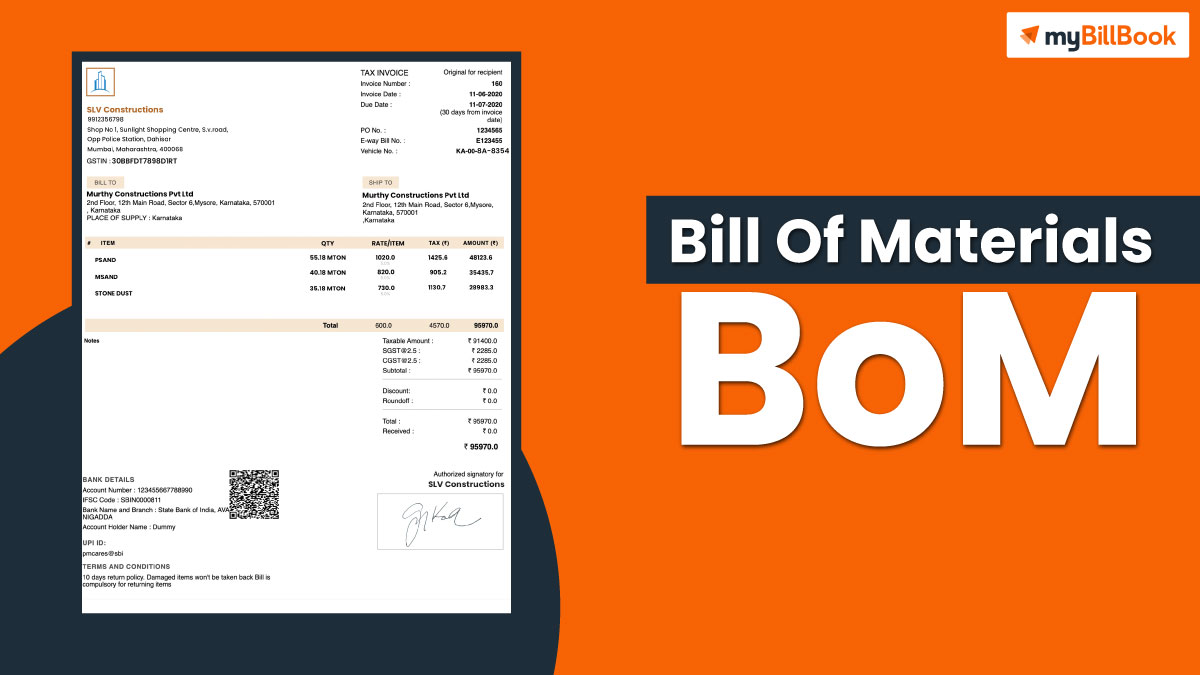What are the Difference between a Debit Note and Credit Note
| BASIS | DEBIT NOTE | CREDIT NOTE |
| Definition | A Debit Note is a detailed document that indicates a debit to the other party’s account. | A credit note informs the other party’s books that their account has been credited. |
| Who Makes Them | The buyer often issues a debit note. | The seller presents the credit note. |
| Example | When the buyer or client returns goods to the supplier of the same, debit notes are issued. | When the supplier of the products gets the items back from the buyer, they give out a credit note. |
| Can be issued | It can be issued when a credit purchase is made. | This can be issued in cases of credit sales. |
| Use of | Blue ink marks Debit Note. | Red ink is used to prepare the Credit Note. |
| Represents | A “Debit Note shows a positive amount.” | A “Credit Note shows a negative amount.” |
| Updated book | Purchase Return Book | Sales Return Book |
| Effect | Debit Note reduces sellers’ accounts receivable. | Credit Note reduces the buyer’s payables in their records. |
| Exchanging for | It is necessary to update the purchase return book in light of the Debit Note. | With the assistance of a credit note, an update is made to the sales return book. |
| Form | This is a different kind of purchase return. | It is a different kind of sales return. |
| Entry | Supplier Account Dr.Purchase return Cr. | Sales return account Dr.Customer Account Cr. |
When should you use a Debit Note & a Credit Note
Use of GST Debit Note
- Increasing in taxable amount — If a supplier wishes to increase the taxable amount of a supply, they must provide the recipient with a debit note.
- Increasing GST levied on the invoice — whenever a supplier wants to increase the cost of GST charged on the invoice, they send the recipient a debit note.
Use of GST Credit Note
Among the various times when the debit note and credit notes are used, find below the following situations when credit note is used
- The recipient returns or discovers inadequate supplies – When a recipient returns or determines that supplied goods or services are defective, the supplier would issue a Credit note. It takes away from the resource that was once available.
- A reduction in the taxable amount – If a seller wants to lower the taxable amount of a supply, they send the recipient a credit note.
- A reduction in the GST amount charged (in the invoice) – If a supplier needs to reduce the rate or value charged in an invoice, they will issue a credit note to the recipient.
Information that must appear on Debit and Credit Notes
- Transparency like the document (such as “updated invoice” or “supplementary invoice”).
- A list of the supplier’s contact information (Supplier’s name and GSTIN) should be included.
- A unique serial number that is consecutive and includes alphabets, numbers, or other special characters like a hyphen “-” or for a specific financial year
- Date of document’s issuance
- Registered recipient information includes the receiver’s name, address, and GSTIN or unique identification number.
- Unregistered recipient’s name, address of both the recipient and the delivery address, along with the state and zip code
- Tax invoice serial number and date.
- The taxable value of goods/services, tax rate, and tax credit/debit recipient.
- The supplier’s or authorised representative’s signature or digital signature.
Conclusion
You should now be aware that the same transaction can involve both debit note and credit note as two different aspects. In other words, a debit note is often issued by the buyer, and the seller usually issues a credit note in exchange for the debit note. A debit note is usually issued whenever a return is outward, also known as a buy return. But, a credit note is usually issued when there is a return inward, also known as a sales return. Buyers who return products to sellers receive debit notes in exchange for their goods, while sellers receive credit notes in return for the debit notes. So, they are both parts of the same business deal.
Because there are varying scenarios in which you may be required to issue either, having a solid understanding of both is critical for any business. In issuing a debit or credit note, you must keep in mind that you cannot just issue a note. You should perform your due diligence, personally inspect the merchandise, and then consider whether there are other options.
Frequently Asked Questions
What is an example of a debit note?
Debit Note is a voucher issued by one party to another indicating that the recipient's account has been debited in the sender's books. For instance, "ABC" is a dealer who buys items from "XYZ". After receiving the supplies, ABC discovers that the shipment contains defective items worth Rs. 10,000.
Who writes credit notes?
A credit note is a statement issued by the seller to the buyer informing the consumer of a refund owing to an error on the original invoice.
Who prepares the debit note?
A supplier or the seller of goods and services must issue a debit note when issuing a tax invoice for the delivery of goods and services, according to Section 34(3) of the CGST Act of 2017. The invoiced taxes are less than the supply's taxable value.
Does a credit note act as an exchange or a refund?
In place of a refund, an organisation will issue a consumer a credit note in a paper format or electronic receipt. A credit note functions as a voucher that may only be used at the store, chain of stores, or company that issued it.
What is a three-way match?
Before authorising payment of a supplier's invoice, a three-way match compares the purchase order, the goods receipt note, and the invoice from the supplier. A three-way match is beneficial when deciding whether or not to pay bills.
Is it possible for a credit note to expire?
Yes. Credit notes have a validity period of one year beginning on the time and date they were issued. If the balance has not been used within 12 months, it will expire.
How are credit notes used?
A credit note would be an official document provided to a client by a company's finance department. When it is necessary to cancel or make changes to an order or transaction, the credit note that follows the invoice is used. You don't have to remove or edit the original invoice to use this legal document to make legally binding changes to it.
How is a credit note issued on an invoice?
Strategies for making a credit note
- Select the desired credit note template.
- Update the company's logo.
- Enter the credit note number and the date of issue.
- Include the credit note's invoice number.
- Include the supplier and customer's GSTIN numbers and the location of supply.
Read more:








